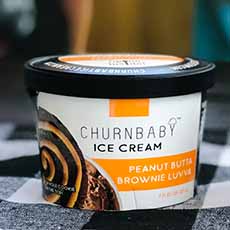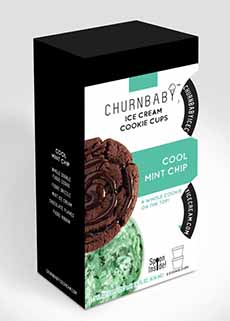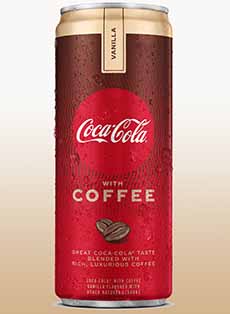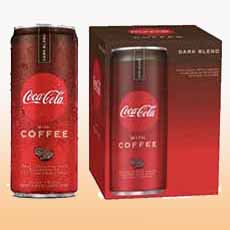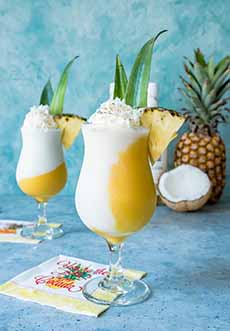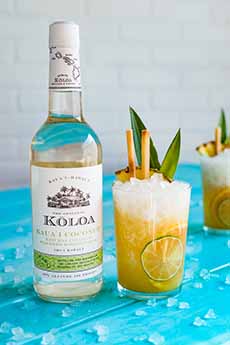|
For red wine lovers, Beaujolais, a wine-producing province in eastern France, produces mostly red wines from the Gamay grape.
White and rosé wines are produced in small quantities. Here, we’ll focus on the reds.
The province of Beaujolais lies in eastern France, from the northern part of the Rhône Valley to the southern part Burgundy.
The granite soils lend structure and depth to the wines, which are light- to medium-bodied, supple and fruity, and lower in alcohol than most red wines.
Almost all the wine produced in the region is red wine, from the Gamay Noir grape.
It is relatively inexpensive, compared to other French reds—especially from next-door-neighbors Burgundy and Rhône.
Beaujolais wines can pair with a broad variety of foods. We’ve provided popular pairings below.
We’ve provided an overview here. Discover more at Beaujolais.com, The official website for Beaujolais wines.
Planning a trip? Head to DiscoverBeaujolais.com
TYPES OF BEAUJOLAIS
There are three categories of Beaujolais wines: generic Beaujolais, which can be made from grapes grown anywhere in the province; Beaujolais-Villages, which must be made with grapes from the greater village area; and Beaujolais Cru, the top wines which have AOC† designation.
There is also Beaujolais Nouveau, a unique category (see below).
Except for the Cru wines, Beaujolais wines are meant to be drunk young. Don’t lay them down: They don’t get better with age (in fact, they decline if kept too long).
Beaujolais Nouveau is a unique category of very light, simple wines that are released shortly after harvest. They are not aged. The category was created in the 1970s by Georges DuBoeuf, one of the largest wine merchants in France, to generate cash up front while the “real” Beaujolais wines aged in barrels until March or later. It is so light that it should be a summer sipper, although it isn’t released until November—and should be consumed immediately after release. Here’s more about it.
Beaujolais Supérieur is harvested at riper levels and decreased vineyard yields, enabling more concentration of flavor. The grapes can come from anywhere in the province.
Beaujolais-Villages There are 38 communes (incorporated municipalities) that produce it; some include their village name on the labels, but most are simply designated Beaujolais-Villages. They should be consumed within two years of production.
Cru Beaujolais wines are the highest quality, AOC† wines. There are 10 cru* wines with AOC designation, each referring to a winemaking region: Brouilly, Chénas, Chiroubles, Côte de Brouilly, Fleurie, Juliénas, Morgon, Moulin-à-Vent, Régnié, and Saint-Amour. The style ranges from lighter-bodied wines meant to drink young, to fuller-bodied wines that can be aged three to five years or longer.
In addition to the 10 crus, there are two “Appellation” wines that are good enough to have earned Cru status but without AOC designation. Their grapes are grown in different parts of the appellation than their associated Cru wine; they are referred to as Appellation wines (superior to Villages wines but subordinate to AOC). These are Chiroubles and Côte de Brouilly.
BEAUJOLAIS & FOOD PAIRINGS
Beaujolais is a wine that is enjoyed with any course of the meal, or by itself when you want a glass of red.
They go well with French classics—pâtés, terrines, rillettes, saucisson sec—and with the cheese course, from white-rinded cheeses such as Brie and Camembert to more flavorful and pungent cheeses.
You can drink Beaujolais with American favorites, from barbecue, burgers, chili and pizza to pairings you might not have considered, like sushi.
And as a rule of thumb, you can serve anything off the grill with Beaujolais.
While many wines are too acidic or tannic to pair with salad, Beaujolais is one that does, be it green salad or vegetable salad, or grain salad.
While Beaujolais wines from the different communes can be served interchangeably, here are examples to pair with the Cru wines.
AOC Beaujolais is wine from the village of Beaujolais, within the province of Beaujolais. The wines are intense, fruity, easy-drinking and refreshing. Try them with anything from a cold meat platter to Arctic char, salmon and sushi. There is also a white Beaujolais that is excellent with salmon and seafood.
AOC Beaujolais-Villages
AOC Beaujolais-Village is the next step up the quality ladder from appellation Beaujolais-Villages. The grapes are grown in higher quality sub-zones within Beaujolais. The wines are intensely fruity and scented; some have good cellaring potential. Try them with roast chicken or other chicken dish, say, chicken cooked in sauce with a potato gratin and grilled fish, such as Arctic char.
AOC Côte-de-Brouilly is a fruity, sophisticated wine that is generally drunk between 2 and 5 years old, but it can be aged for 10 years or more. They wines are more robust red wines than the Brouilly villages wines, because the grapes are grown different soils. Locals drink it famous poultry liver terrine (try chicken, duck or goose liver). It also works with white fish, stews and a classic roast chicken, plus grilled lamb chops with rosemary.
Appellation Brouilly produces wines with a deep ruby aroma and a palate that is fruitier than it is floral (think red berries and plums, with occasional mineral notes). The commune has four different types of soil, leading to different characteristics based on producer. Some consider Brouilly wines to be the most complex Beaujolais, yet it welcomes a cheeseburger or turkey burger.
AOC Chénas grows on n the slopes above Moulin-à-Vent. The wines are soft on the palate, well-structured and a perfect pairing with blanquette of veal or poultry, and wild mushroom salad. They also go well with strong cheeses. Drink them with beef tartare or chili con carne, too.
AOC Chiroubles is a very aromatic cru; a lively, rounded and delicate wine. Lightly tannic, it’s a very pleasant wine to drink casually with friends, serve with cold meats or light starters. In France, it’s popular with verrines and grilled fish too. Because of the low tannins, it also works with sushi and seared ahi tuna.
Chiroubles a delicate wines that can be drunk right away, or aged for several years. The bouquet continues to evolve. Enjoy it with charcuterie and barbecue.
AOC Fleurie is an elegant, delicate and floral wine; it is called the “feminine wine” of Beaujolais. They have a certain softness compared to other Beaujolais appellations: low acidity, gentle tannins. You can serve it with vegetable dishes, fish crudo, frog’s legs, salads and more substantive dishes, like grilled meat—especially lamb, from leg of lamb to grilled lamb chops with rosemary.
AOC Juliénas, named after Julius Caesar, has grapes grown on sunny slopes. The juicy red wine pairs well with grilled red meat as well as seared ahi tuna.
AOC Morgon is described by some as “the fruitiness of a Beaujolais and the charm of a Burgundy.” It robust and tannic, but not overly so. Try it with lasagne other hearty pasta, or pizza. It’s also great slightly chilled with a beef carpaccio or beef tartare, and grilled steak with garlic butter.
AOC Moulin-à-Vent is one of the most prized crus, robust and complex with mature fruit, spice and floral aromas. It should be aged for 6 or 7 years to develop its full flavors for 6 or 7 years. Then, serve it with roast turkey and chestnut stuffing, pork, filet mignon, lamb and pork. Another popular dish is grilled steaks with garlic butter.
AOC Régnié wines produce a unique fruitiness with fine tannins and a good finish. It’s best drunk young but, can be aged for up to 5 years. Popular pairings in the region are duck, leg of rabbit and red mullet. Serve it as an apéritif, at picnics, or with tapas.
AOC Saint-Amour is celebrated as the wine of love (amour), and nearly a quarter of the production is drunk on February 14th (get some in advance before it sells out). Two different types of wine are produced in Régnié: a shorter maceration period for light, aromatic wines to be drunk shortly after the harvest (Beaujolais Nouveau) and a longer maceration wine with the structure and tannin to age for 4 to 5 years. Try it too with autumn and winter dishes, including risotto and pumpkin recipes. Also, spinach salad with bacon and pecans and barbecue.
|
|
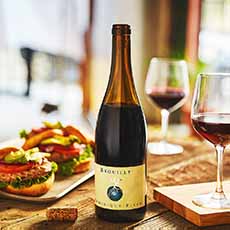
[1] Have Beaujolais with your burger (all photos courtesy Beaujolais | Facebook).
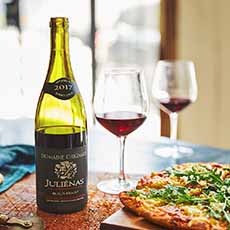
[2] Beaujolais pairs well with pizza and pasta.
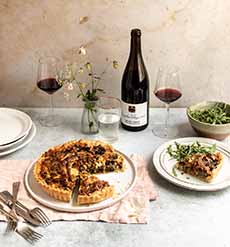
[3] Vegetable dishes and French specialties like quiche are naturals with Beaujolais.
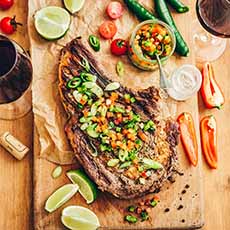
[4] Beaujolais is a winner with grilled meats, roasts and similar preparations.
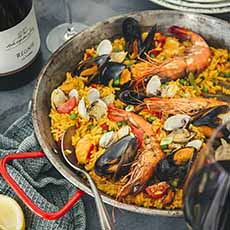
[5] Beaujolais also pairs with seafood, from grilled fish to paella.

[6] A classic: roast chicken and Beaujolais.
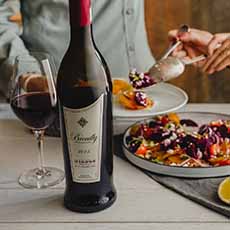
[7] You might be tempted to reach for a white wine, but Beaujolais is delicious with this beet and citrus salad.
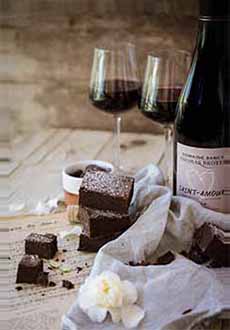
[8] Nothing says love like a dessert of brownies and Saint-Amour Beaujolais.

[9] The Beaujolais region in France (image courtesy Vinexpo-Explorer).
|











